What is gamification in marketing?
Gamification is the use of game mechanics and dynamics in non-game contexts, such as marketing, education, or business to motivate, engage, and retain people. In marketing, the first loyalty programs of the early 1980s already included gamified elements like points and rewards. However, it wasn’t until the 21st century that gamification marketing took off, due to the widespread use of the internet, smartphones, and advancements in programming.
Here are some key concepts to understand about gamification marketing:
1. Human-Centered Design
Games are designed around human motivation, they aim to inspire players to overcome challenges, in contrast with many traditional systems focused on function. Gamified experiences consider motivation, emotion, and engagement from the outset.
2. Human Motivations Behind Play
Yu-kai Chou, a pioneer in gamification, developed the Octalysis Framework, which identifies 8 core drivers of human behavior. Understanding these drivers can help you decide what kind of motivation will guide your gamified campaign:
- Epic Meaning & Calling: Contributing to something bigger than oneself.
- Development & Accomplishment: Progressing, unlocking achievements, overcoming challenges.
- Empowerment of Creativity: Enjoying experimentation, problem-solving, and immediate feedback.
- Ownership & Possession: People engage more with things they feel they own.
- Social Influence & Relatedness: Competition, collaboration, and recognition drive action.
- Scarcity & Impatience: Motivation to act when something is rare or time-limited.
- Unpredictability & Curiosity: Like in a good story or game of chance.
- Loss & Avoidance: Preventing negative outcomes or missed rewards.
3. Game Elements Used in Gamification
Gamification borrows elements from game design and applies them in other contexts. Kevin Werbach and Dan Hunter created a gamification framework structured as a pyramid with three categories: dynamics, mechanics, and elements.
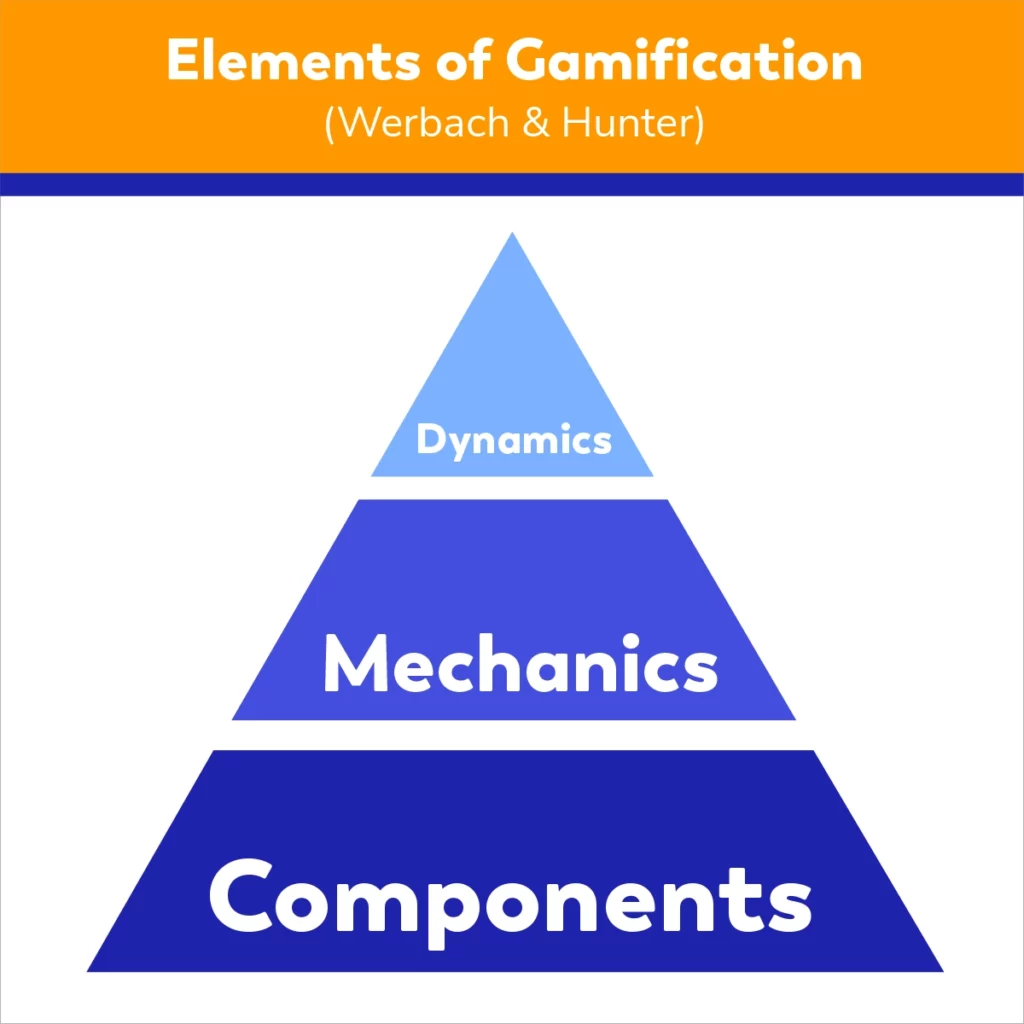
The pyramid structure represents a variety of options for designing gamified experiences. Additionally, the components implement the concepts from the higher levels, such as mechanics and dynamics.
Dynamics are the most abstract and enduring part of a gamified system; they guide the player’s or user’s experience over time. Examples of dynamics include:
- Narrative Dynamics: A storyline that gives meaning and emotional connection. E.g., a digital escape room.
- Progression Dynamics: User advancement from beginner to expert, shown through levels, achievements, or stages. E.g., an online trivia.
- Relational Dynamics: Social interaction like competition or collaboration that builds engagement.
Mechanics are what turn dynamics into something more practical and tangible, they are the rules and processes of the gamified experience. Their main elements include challenges, competition, cooperation, feedback, rewards, resources, and transactions.
Finally, components are the most visual and concrete representation of the gamified system. They are the elements that appear on the interface. According to Werbach & Hunter, the following components can be used when designing a gamified experience:
- Achievements: Rewards for completing tasks.
- Badges: Visual representations of achievements.
- Avatars: User representations within the system.
- Collections: Sets of items or badges.
- Levels: Stages that mark progress.
- Points: Reward units for specific actions.
- Leaderboards: Rankings showing user status.
- Quests/Challenges: Tasks to complete.
- Unlockable Content: Gated content accessible after achieving goals.
- Gifts & Prizes: Free virtual rewards.
- Social Graph: Features for users to view and interact with friends.
Not all components can be easily applied in a pre-designed interactive promotion, but with Easypromos, you can use most of them in your gamified campaigns.
- Points and scoring: All Easypromos games and quizzes include point systems.
- Rankings: Dedicated ranking pages show top players.
- Digital rewards: Coupons, discount codes, and both digital and physical prizes.
- Game economy: Users earn, spend, or exchange virtual currency.
- Challenges: Each game sets completion criteria (e.g., answering trivia, reaching a score, solving puzzles).
- Levels and unlocks: Points and challenges can unlock more games or stages.
- Time limits: Time pressure adds urgency. In Easypromos games, the time left can score extra points or end a round if it runs out.

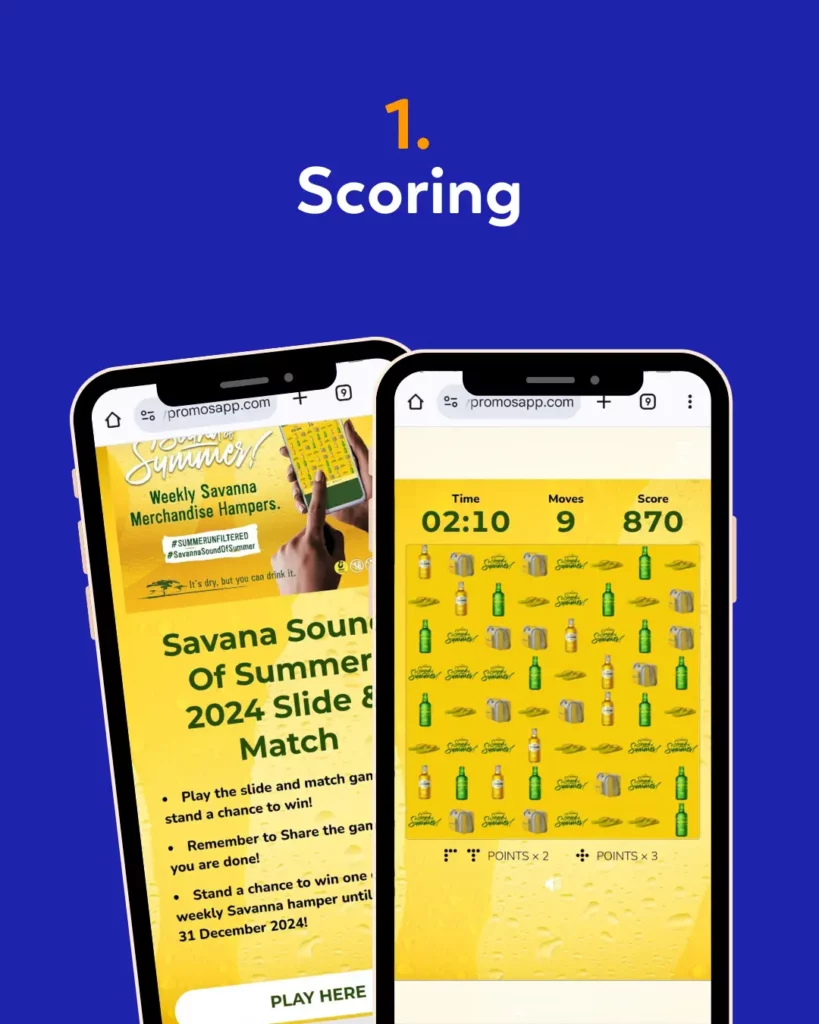
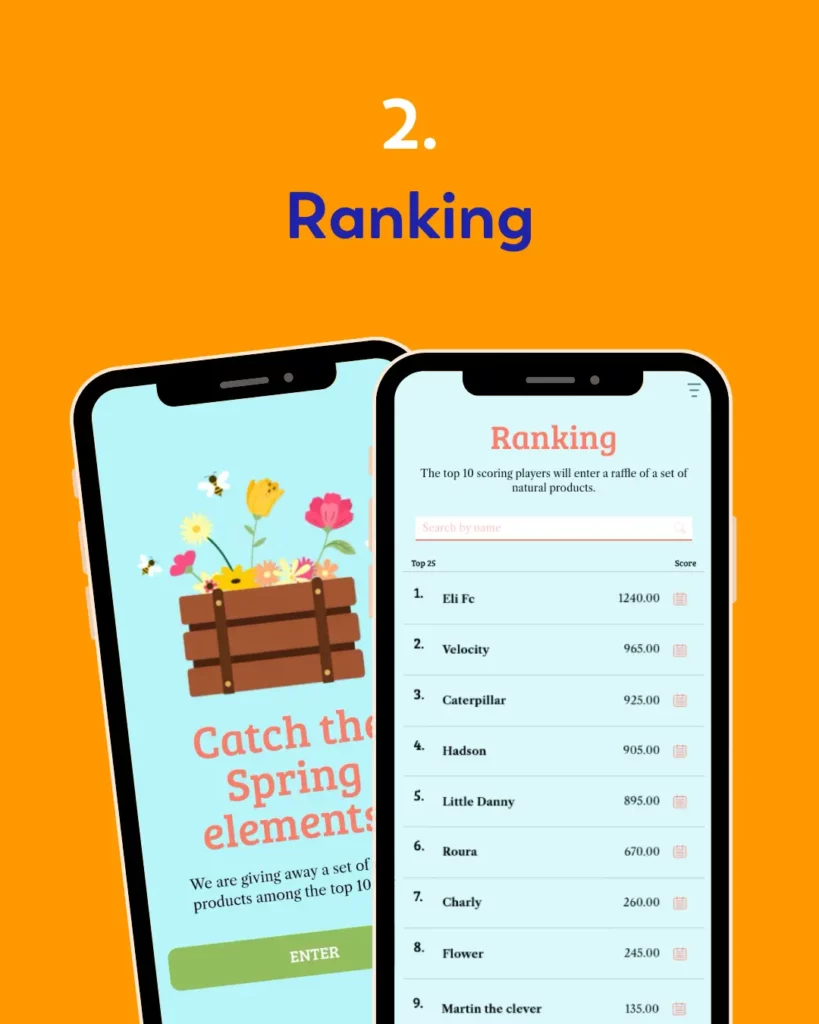
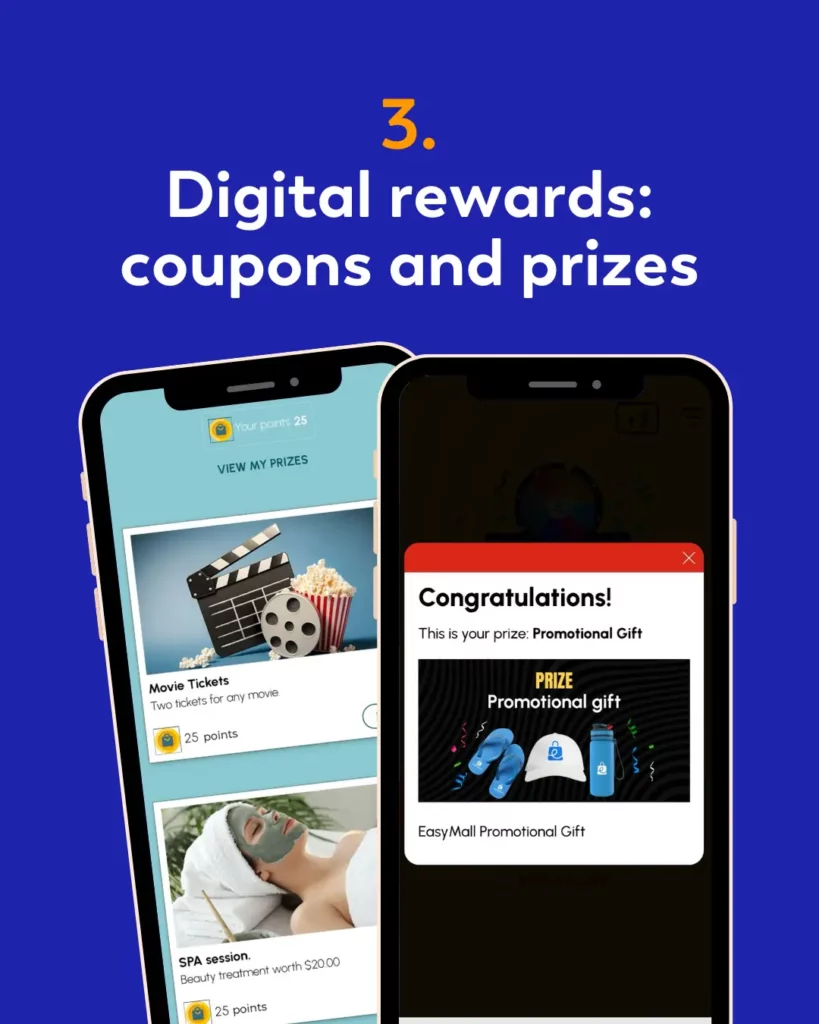

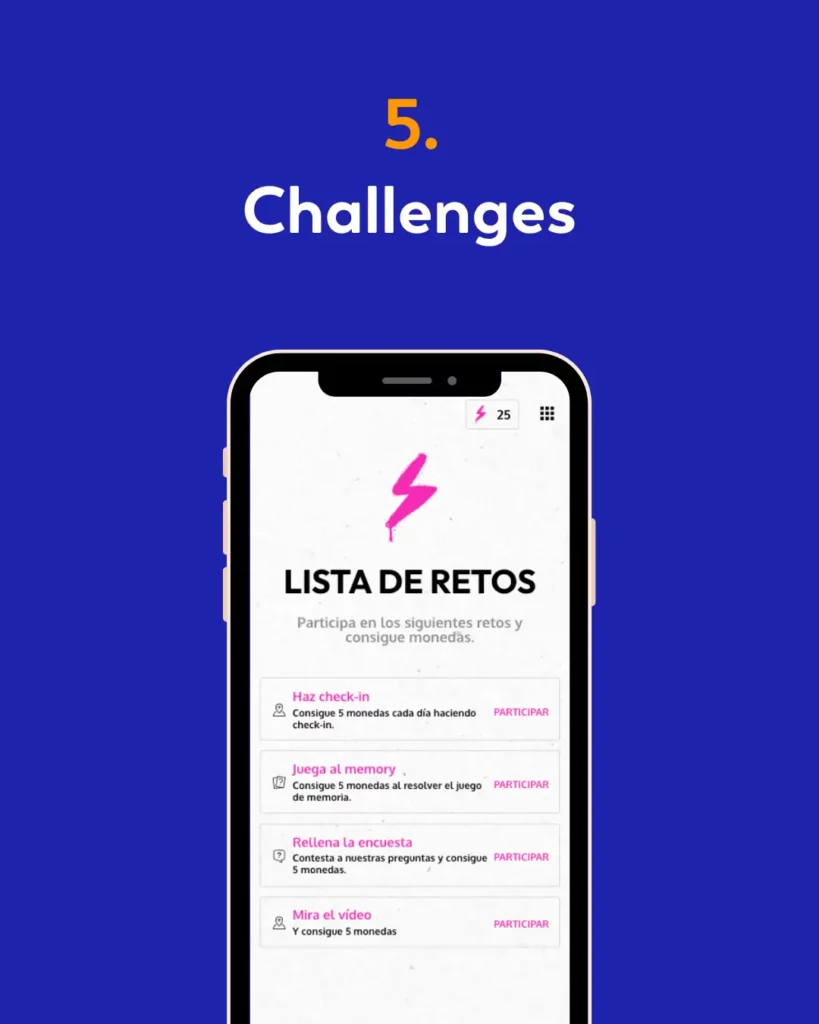

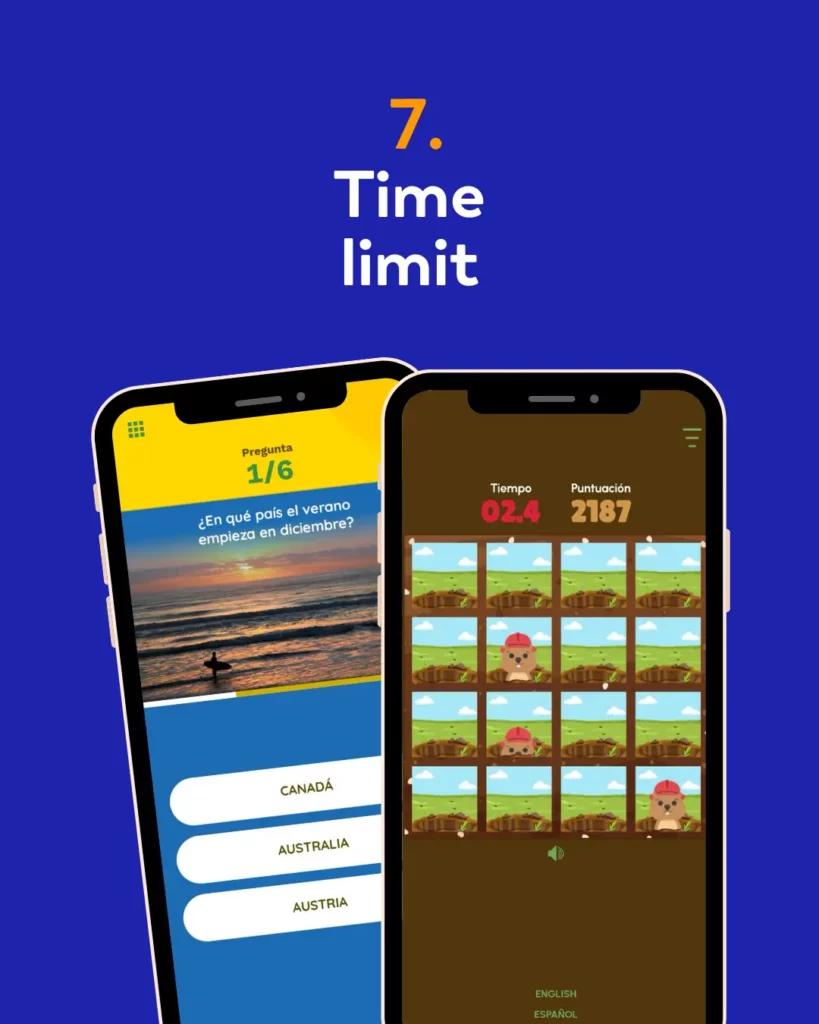
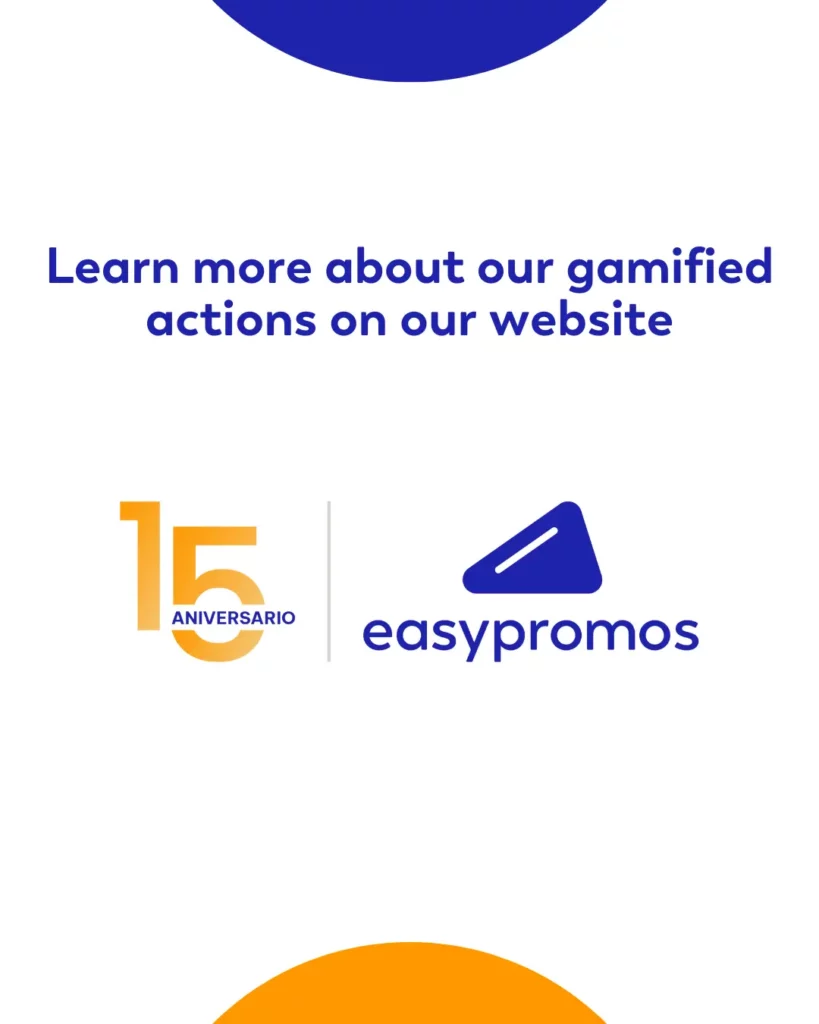
What Is Gamification in Marketing and What Are Its Benefits
Practically speaking, gamification increases audience interaction. With over 1,000 ads seen daily by the average person, most one-way communications, interactive campaigns stand out. Gamified promotions make users feel valued and increase brand differentiation.
A game-based marketing action adds value because fun experiences naturally boost engagement and create positive associations. Asking users to play a challenge is far more engaging than filling out a form.
Gamification can also be a powerful tool for collecting user data. People are more willing to share their info when their effort is balanced with motivation. Aligning your mechanics with Octalysis motivators and offering rewards increases conversion.
Gamification Techniques in Marketing
Knowing the components isn’t enough—you also need to design an appealing and functional system. Werbach proposed a 6-step framework to guide this process:
- Define your goals: Clarify what you want to achieve.
- Identify target behaviors: What specific actions do you want users to take?
- Know your players: Understand your audience and what drives them. Richard Bartle identified four player types: Explorers: Motivated by curiosity and learning. Socializers: Seek connection and collaboration. Achievers: Aim for personal success and recognition. Killers: Enjoy competition and dominance.
- Choose your dynamics: Emotional experiences to drive engagement.
- Select mechanics: Rules and interactions that guide participation.
- Add components: Visual elements like points, badges, and leaderboards.
Make sure your approach aligns with user motivations (e.g., Octalysis) and is adapted to your audience, as not all dynamics are appropriate for all audiences. A compelling narrative and meaningful feedback are just as important as rewards.
How to Launch a Gamified Marketing Campaign
Easypromos has over 15 years of experience in interactive promotions. Since 2019, we’ve added a wide range of games to our catalog, more than 50 interactive products, many of them with built-in gamification features.
Here’s how to start your first gamified campaign with Easypromos:
- Define your main goal. Choose a game mechanic aligned with your campaign goal. For example, a memory game could support brand awareness by showcasing product visuals.
- Understand your target audience. Analyze users’ habits: Are they active or passive? Do they enjoy games? What motivates them? Compare with Bartle’s player types to tailor your mechanics.
- Select the right dynamic. Choose between narrative, progression, or relational dynamics based on your goals and audience.
- Set up your gamified action. Choose a product from the Easypromos catalog. For example, organize a digital escape room for a narrative experience or a level-based competition with rankings for competitive players.
- Define rewards. Use prizes to drive participation. Gamified actions are more engaging than passive ads, and with added incentives, your conversion rates will rise. Distribute discount codes, digital prizes, or even printable PDF tickets.
- Get expert advice. Easypromos is a self-service platform, but help is available. Reach out via chat or book a video call for expert guidance.
- Plan your campaign promotion. Each gamified campaign has its own microsite, fully responsive across devices. Once published, focus on your promotional strategy to ensure it reaches your target audience.
These steps are just the beginning of your journey into gamified marketing—no programming skills required. Just explore the platform, tap into your creativity, and put your marketing know-how into action. Create a free account and start experimenting with gamification for your next campaign.
